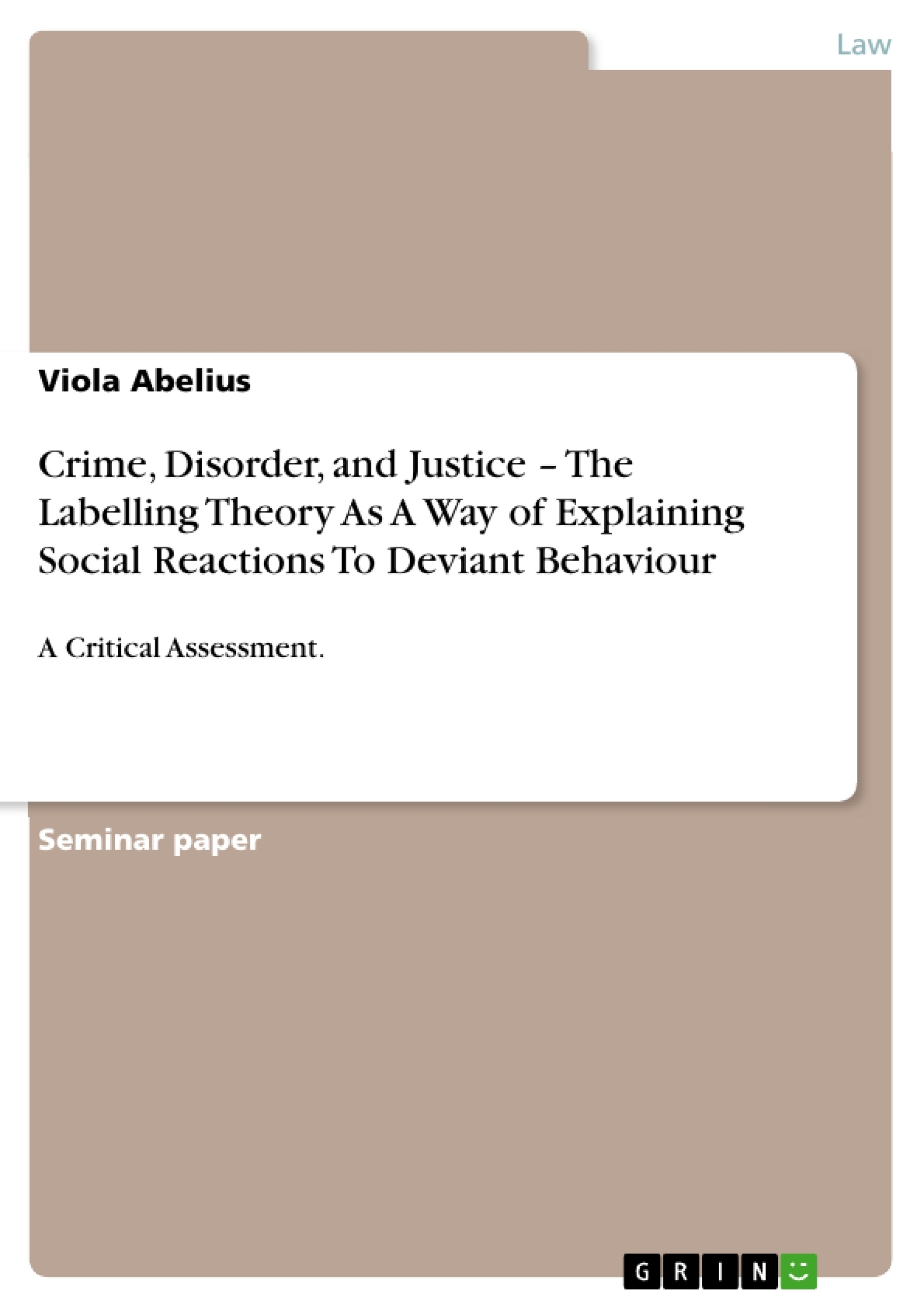In the 1960’s new deviance theories came up in sociology. One of them was the labelling theory, which offered new explanations of crime and deviant behaviour. This paper will critically assess to what extent the labelling theory can explain societal reactions to deviant behaviour and how these societal reactions work and influence deviant behaviour.
Inhaltsverzeichnis
- Crime, Disorder and Justice
- The Labelling Theory As A Way of Explaining Social Reactions To Deviant Behaviour - A Critical Assessment.
- Appendix 1
- Literaturverzeichnis
Zielsetzung und Themenschwerpunkte
This paper critically assesses the labelling theory's ability to explain societal reactions to deviant behaviour and how these reactions influence deviant behaviour.
- The role of societal labelling in creating deviant behaviour
- The impact of the criminal justice system on the development of deviant status
- The role of the media in amplifying deviance
- The limitations of labelling theory in explaining deviance
- The power dynamics inherent in the labelling process
Zusammenfassung der Kapitel
The paper begins by outlining the core principles of labelling theory, which posits that deviance is not an inherent quality of an act but rather a consequence of societal reactions. It argues that society labels certain individuals as 'losers' and outsiders, leading them to internalize this label and engage in deviant behaviour. The paper then explores the role of the criminal justice system in reinforcing deviant status through its interventions, such as arrests and convictions. It highlights the potential for deviancy amplification, where societal reactions, particularly from the media, can exacerbate deviant behaviour.
The paper further examines the social context of labelling, emphasizing that the meanings and motives behind labelling are shaped by social norms, values, and experiences. It critiques the labelling process as a form of social exclusion, denying individuals the opportunity to choose a life without deviance. However, it acknowledges the dynamic nature of societal reactions and the possibility of changing norms and values over time. The paper also considers the limitations of labelling theory, recognizing that environmental factors and individual choices play a significant role in the development of deviant behaviour.
Finally, the paper delves into the power dynamics inherent in the labelling process. It argues that labelling is not merely a way of classifying individuals as deviant but also a means of self-revaluation and social control. The act of labelling, it suggests, reflects the power structures within society, where those in positions of authority impose rules on others.
Schlüsselwörter
The key words and focus themes of the text include labelling theory, deviance, societal reactions, criminal justice system, deviancy amplification, social norms, power dynamics, and social control. The paper explores the role of labelling in shaping deviant behaviour, the impact of societal reactions on individuals, and the power structures that underpin the labelling process.
- Arbeit zitieren
- Viola Abelius (Autor:in), 2009, Crime, Disorder, and Justice – The Labelling Theory As A Way of Explaining Social Reactions To Deviant Behaviour, München, GRIN Verlag, https://www.grin.com/document/180888
-

-

-

-
Laden Sie Ihre eigenen Arbeiten hoch! Geld verdienen und iPhone X gewinnen. -

-
Laden Sie Ihre eigenen Arbeiten hoch! Geld verdienen und iPhone X gewinnen. -

-
Laden Sie Ihre eigenen Arbeiten hoch! Geld verdienen und iPhone X gewinnen. -

-
Laden Sie Ihre eigenen Arbeiten hoch! Geld verdienen und iPhone X gewinnen. -

-
Laden Sie Ihre eigenen Arbeiten hoch! Geld verdienen und iPhone X gewinnen.

